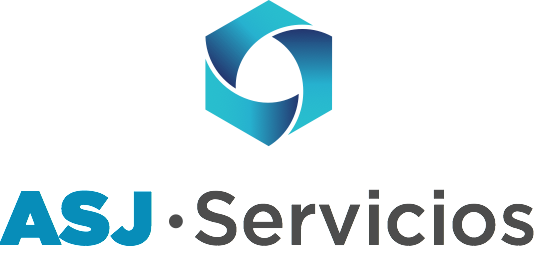Developing the backbone for the digitization of banking
- Jassen Pintado
- May 21, 2021
- 7 min read
Digital Transformation across Grupo Petersen’s four banks become a benchmark in strategy, activation, progress and growth for a plan simplifying customers’ interactions

PARTNERS
Grupo Petersen is one of Argentina’s most important corporations. What began in 1920 as an engineering and construction firm is currently diversified into more companies in the agribusiness, finance -and fintech- and urban services sectors.
The corporation is comprised of the following companies: ASJ Servicios; Banco Entre Ríos; Banco San Juan; Banco Santa Cruz; Banco Santa Fe; Mantenimientos y Servicios; Petersen, Thiele & Cruz; Plus Pagos; Qualia; y Santa Sylvia.
Four brands up to a digital challenge
Grupo Petersen took part in banking and finance since the mid-1990s, and one of its current challenges is developing a digital organizational culture by establishing digital solutions along with cutting-edge technology as a unique digital bank model is deployed and becomes a standard for complete management of simultaneous operations in the four banks belonging to the group: Banco de Entre Ríos, Banco de San Juan, Banco de Santa Cruz and Banco de Santa Fe.
“This digital transformation is a benchmark in Latin America, implying the deployment of a unique regional digital model in four banks with more than 3,500 employees scattered across five different places,” commented Luciana della Croce, Chief Digital Officer for Grupo Petersen.
Proven experience in digitizing processes
Digital Transformation across the group’s banks is led by Luciana Della Croce, Chief Digital Officer, and her more than 20-year experience working for global companies in strategic and tech consulting, with tenures in IBM, Telefónica/Movistar and Neoris (a CEMEX company), among others. Della Croce has thrusted digital transformation in different organizations by deploying innovative technologies, ensuring business growth within an environment under constant disruption.
Della Croce graduated in Business Management from Universidad del Salvador (Buenos Aires, Argentina) and earned a Master’s in International Finance from IEAF (Spanish Institute of Financial Analysts), and a Master’s in Telecommunications from the Polytechnic University of Catalonia, besides other postgraduate studies in Harvard University.
A clearly defined strategy
The current digital transformation program being carried out at Grupo Petersen’s banks began its journey in 2020, and among its first premises considered an inward awareness program at each bank about what this initiative would mean.
The group created a Digital area to lead the corporate digital strategy, whose main goal has been the creation of a simple, innovative, omnichannel experience for the four banks’ more than 2 million customers.
A long-term three-year path was established in which deep, large-scale projects were set for tech transition with an organizational impact. Afterwards, the short- and mid-terms were planned, designed to be revised quarterly.

“We want to obtain improved experiences based on solutions enabling flexibility, efficiency and scalable growth,” commented the executive.
Omnichannel experience through simplified processes
Among the fundamental concepts of this transformation, it has been established to maintain unity and consistency in every channel with customer interaction, thus significantly improving customer experience and a timely arrival to the market for value-generating digital services and products.
These goals have been accomplished through lean customer journeys through their involvement with the banks, along with an MVP methodology, with products released in three to six-month periods, continuously evolving to keep bringing value and significant improvements.
“Being extreme, we should be able to solve 100% of customer’s needs in the digital mode, creating the possibility to be physically present at the bank only during circumstances that require so,” della Croce pointed out.
Corporate digital strategy
Factoring technology and infrastructure as enablers, along with talent development and incorporation and the spread of organizational culture transformation toward digitalization, strategy execution answers to these three pillars:
• Digital solutions and services design: these were designed prioritizing the adoption of simple and easy experiences by optimizing the customer’s digital journey. Every pain point was eliminated, considering the adoption of a multichannel strategy with modern, modular architecture based in APIs, platform integration and solutions for managing the new, omnichannel digital banking for the group, which includes: a new home screen in banks’ websites, apps for home banking, mobile banking, digital onboarding, bank websites, content management, conversational banking and social media, among other apps.
“We implemented a conversational bank solution -chatbots- with virtual assistants based on AI and machine learning for any kind of device, bringing automation to more than 500 possible intents for all of our banks. Our chatbot is ‘La Mano’, a character displayed as a robotic hand,” stated Leandro González, Portfolio Manager and Project Management Officer for Grupo Petersen.
• Digital Marketing: our strategies’ main goal was obtaining new customers, profiting and capitalizing from existing customers, increasing web views through SEO and SEM, incorporation of social media resources, real-time bidding, advanced analytics, social media monitoring, messages, as well as other digital strategies and contents. We are working with the market’s best practices in digital marketing with support from digital agencies such as Digital Soul. We are deploying an omnichannel marketing strategy aiming to reach 1:1 personalization of our customers.
• Big Data and Advanced Analytics: These resources help us in decision-making based on data aligned with AI, which can be monitored in real time, obtaining useful insights from models and from predictive and cognitive use cases. We have developed more than 50 use cases for the financial industry, deploying these same cases in our four banks and managing different ad campaigns with specific microsegmentation for each customer. We rely on an industry-unique model from DataWarehouse which we have boosted with Bigdata advanced tech, adding a significant volume of unstructured data in real time from multiple sources.
Shared solutions among four entities
The best UX and digital products practices were applied to each of the group’s four banks with a flexible, modular and scalable architecture, accessible from any device to make any transaction.
We have chosen the Cyberbank solution from Technysis Digital Banking as an omnichannel platform to bring cross support to every digital operation for the group’s four banks. This includes managing digital banking for the four banks in the web and mobile versions, and also the 100% digital onboarding which allows for online sales of products and services. This great solution allows us to quickly scale with four banks at once with simplified models while still keeping off-limits to each bank’s local branding and customization. In this first phase we are updating all of our Digital Retail Banking platform, scheduled to become fully operational in July 2021, and a second phase is already underway to update all of Digital Wholesale Banking.
“In this digital transformation process we are following recommendations from Gartner and widely known market analysts, besides researching for the most innovative solutions in every industry,” commented Daniel Miranda, Head of CX, Digital Products and Channels for Grupo Petersen.
“Everything we do is fourfold, which requires additional complexity. Four leading brands of regional banks must be managed around each brand’s individual, regional traits,” explained Nicolás Sanín, Head of Digital Marketing for Grupo Petersen.
In the same way, the banks interact with other Grupo Petersen brands by creating strategic partnerships in digital offer, communications and businesswise.
The ASJ fintech
The ASJ Servicios fintech collaborates with Grupo Petersen’s banks and with the financial industry in disrupting traditional payment methods, easing access to payments and collections for businesses and legal persons in a simple, digital and transparent way.
ASJ began in 2013 as a collection company looking to decompress transactions from the group’s bank locations, its network currently relies on more than 1,200 payment terminals.
A digital ecosystem allowing multiple payments with deposits or checks through a mobile phone, debit/credit cards or a bank account has been developed since 2018.
In early 2021, ASJ created a digital wallet for the Santa Fe province, creating discount and reimbursement partnerships to motivate customers to use it. Along with Banco Santa Fe, in less than three months the digital wallet system recorded purchases near $11 million between 200,000 users and 4,000 affiliated businesses.
“We are very excited about this, we are engaged in conversations with other provinces in order to replicate this very capable model for citizens and business,” declared Alberto Murad, General Manager for ASJ Servicios.
Besides the four banks from Grupo Petersen, the technology and systems offered by ASJ Services are also used by Banco de Córdoba, Banco Corrientes, Banco Macro, Banco Neuquén and by FCA Compañía Financiera, among other institutions.
Driving users toward digitized banking
Due to the banks’ large segment of retirees among its customers, a strategy to help them migrate toward digital banking was developed. This strategy is designed to help individuals requiring special assistance to get to know and learn how to use these new channels. Strategies to drive other customer segments to digital banking were also developed. Each strategy has been aligned with service provided at the banks’ locations and customer support networks.
“We are working on a plan that results in as few pain points as possible, which leads to solving any transaction digitally in its entirety,” della Croce remarked.
COVID19, Digital Transformation’s major accelerator
The adoption of digital platforms increased exponentially due to the pandemic. What was originally planned to be finally executed gradually after two years ended up happening in three months, with web traffic increasing fivefold in the banks’ websites, reaching an average of 5 million visits per month.
On its behalf, chatbot conversations increased by 700%, solving approximately 400,000 monthly queries. And social media interactions and queries were 20 times the average, establishing these as the main channels during the pandemic.
“Transaction volumes doubled, resulting in about 50 million monthly transactions through home and mobile banking. Digital channel users increased by 20% in just three months. Artificial Intelligence algorithms allowed us to answer in real time as we faced new situations and constant changes,” noted Martín Nascimbene, Chief Digital Marketing Officer.
Enabling CSR digitally
Grupo Petersen’s commitment to its surrounding communities is carried through four foundations engaging actively in continual outreach efforts.
In 2020, a learning campus was created, supported by an LMS (learning management system) platform, linking different players in society offering educational opportunities with known specialists and personalities promoting collaboration.
“Efforts in education, culture and local development are carried out through our foundations. Programs are promoted considering each community’s context and needs. Tech innovation is part of every action for social investment in education,” declared Cecilia Hancevic, Head of Fundaciones Grupo Petersen.
A future with easier transactions
The omnichannel vision and improvement of user experience are permanent goals along with continual updating for digital banking, digital payment methods and app development.
By mid-2021 the entire upgrading for retail banking will be completed for the four banks. This same process will be completed in 2022 for wholesale banking used by businesses and SMEs.
“The use of Artificial Intelligence must be understood with a ‘cross’ focus of support and efficiency through the entire organization and its processes,” declared Leonardo Acosta, Head of Big Data and Advanced Analytics.
The roadmap for Grupo Petersen is planned for one to three years with designated periods for AI incorporation in processes with the most value such as CX, digital channels, Big Data, digital marketing, advertising campaigns and sales, considering feedback as a key factor to know and improve user experience.
“The banking industry has a great opportunity to accelerate mobile app development, a trend dominated by startups and fintechs capable of developing APIs which currently surround traditional banking,” finalized Luciana Della Croce, Chief Digital Officer for Grupo Petersen.







































Comments